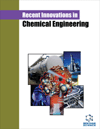
Full text loading...
We use cookies to track usage and preferences.I Understand

Recently, abundant agricultural solid waste has been utilized as sustainable biosorbents for removing heavy metals from aqueous solutions. However, the influence of the carbonization parameters on the specified biosorbent performance has not been well discussed. In this study, we developed the removal efficiency (RE) of Exhausted Kahwa Coffee (EKC) as a low-cost and high-efficiency biosorbent for Cd (II) under various carbonization temperatures (300 - 600 ˚C) and time (1- 4h).
The batch biosorption test showed that the EKC biochar with a carbonization temperature of 500 ˚C and time of 4 h removed 97% of Cd (II) from the solution. The biosorption performance was further investigated by integrating the physicochemical changes in the surface and functional groups of the EKC biochar at different temperatures using BET, SEM, and FT-IR instruments.
The FT-IR showed alterations in the functional groups, while the BET data and SEM images demonstrated that the porous surface of the biochar developed as the temperature increased. Furthermore, the biosorption test data was plotted in the Langmuir and Freundlich isotherm models, where the Langmuir isotherm model showed the better fit of EKC biochar. The maximum biosorption capacity of the EKC biochar on Cd (II) was calculated at 3.41 mg/g by fitting the equilibrium data to Langmuir isotherm equations.
It was found that the kinetic data fitted well with Pseudo-Second-Order (PSO) with a correlation coefficient of R2 = 0.99. These findings imply the influence of the carbonization parameter on the potential biosorption of the EKC biochar on Cd (II).

Article metrics loading...

Full text loading...
References


Data & Media loading...